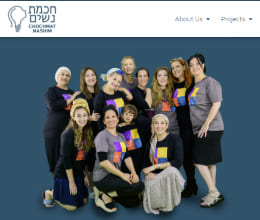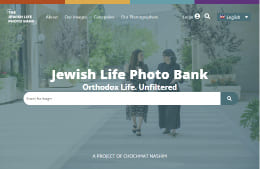For a small country, we have a lot of regions. There is the “Tzafon” or “North”, where everyone who doesn’t live there goes for holiday breaks to enjoy the vistas and water hikes. In the winter, Israelis can be found catching the snow on Mt. Hermon, the one place you can reliably find snow, more or less, for a few months a year.
The “mercaz” or “centre” describes Tel Aviv and its surroundings, which is very different than the rest of the country. Fast-paced, densely packed, high tech — there is reason Israelis use the phrase ‘Medinat Tel Aviv” or the State of Tel Aviv to describe this city.
The “shtachim” or “territories”, also known as the “West Bank” sits bean shape in the middle of the country. Here, many Israelis live in towns close to Palestinian villages. The area is separated from Israel proper by crossings and some Israelis don’t like to travel there.
Jerusalem, the capital, sits in the Judean hills, forest on one side, desert on the other. Filled with moshavim, kibbutzim and towns, the sprawling forested Judean hills are a favorite for bikers and hikers. To her east, the road descends under wide open skies to the Judean desert and down to the Dead Sea.
The Negev and Arava deserts are stark in their bleached beauty, full of phenomenal trails, oases, ancient sites, and the Dead Sea. Those who live here like the seclusion and serenity of the desert and specialise in making it bloom.
West of here is a region called the “South”. It’s not actually in the south of the country, rather it’s “south” of where most of the population lives. The other name for the region is “Otef Aza” or the Gaza Envelope. Here lies Sderot, Netivot, Ofakim, Ashdod, Ashkelon and other towns and villages.
It’s a slow paced region where life is good…except when rockets rain down on it. They also must contend with burning fields and terror tunnels, all courtesy of their neighbors in Gaza. Children there who have turned 18 have never known a life without the fear of having 15 seconds to run to a shelter.
Last week was particularly hard. Israel eliminated an Islamic Jihad terrorist responsible for numerous attacks on Israeli civilians and who was supposedly imminently planning more.
In response, Islamic Jihad shot hundreds of rockets at Israeli cities and towns — one going so far as Tel Aviv, shutting the city down and closing schools for hundreds of thousands of children. While most of the country heard one or no sirens, those in the south spent days at home, schools closed, businesses shuttered. Homes, factories and a nursing home took direct hits, causing extensive damage but few casualties, thanks to the “tzeva adom” red alert system that warns citizens of incoming rocket fire.
The alarms themselves cause significant stress and trauma. On Tuesday, an eight year old girl collapsed from the anxiety and was brought to the hospital in critical condition — she is expected to recover.
Bar and batmitzvahs and weddings couldn’t be held as there was no way to guarantee people’s safety. Crying brides were interviewed on TV. Families took to social media in hopes of finding halls out of rocket range to host weddings. Offers poured in and a few couples took advantage of the kindness of others, moving their weddings miles away. One couple, instead of celebrating with 1,000 guests celebrated in a bomb shelter with 100 when it became clear that too many guests were afraid to leave their homes to travel.
Netta Barzelai, last year’s Eurovision winner took herself down to Be’er Sheva where a couple had moved their wedding. She surprised them with a concert in their honour. Another bride and groom getting married in the “mercaz” offered to host couples from the “south” saying they didn’t need to bring anything, to just come with their guests. The mayor of Sderot joined a family to celebrate a girl’s batmitzvah — also cancelled because of the situation. He’s on video singing to her. The Druze village of Daliat al Carmel, announced that all of its homes were open to anyone in the south who wanted to come north to get away from the rocket fire.
There are a number of regions in this small country. But in the end, we are all one. That is why, when things are hardest in one area, those in the others open their hearts and homes.
Originally published in The Jewish Chronicle


